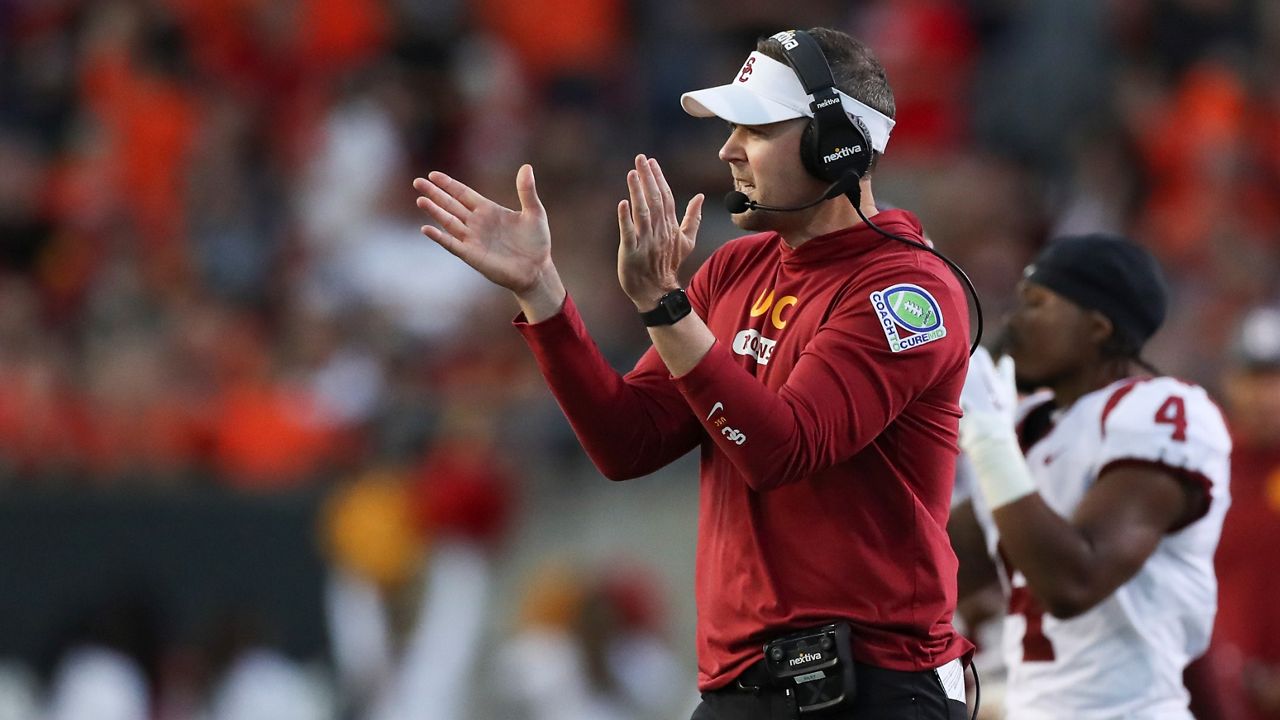The racial gap in graduation rates for this year’s bowl teams in college football has declined again, this time to the smallest difference in the history of a study examining the data.
The Institute for Diversity and Ethics in Sport (TIDES) at Central Florida reported Wednesday that the overall Graduation Success Rate (GSR) for bowl-bound teams in 2022 has reached an all-time high of 83%. At the same time, improvements in the average GSR for Black football players (79.5%) slightly outpaced those of white players (91.7%).
Those are all improvements from last year’s study reporting GSRs of 81.3% overall, 78% for Black players and 89.7% for white players. This year’s gap of 11.6 percentage points is the smallest in the history of the study dating to 2004; it was 19 percentage points as recently as 2017.
“As long as there are gaps between any part of how we look at life in America — in this case, education — whether it’s wealth, health care, the criminal-justice system, when there’s a disparity between different racial groups, then we have a problem in America,” TIDES director and lead report author Richard Lapchick said. “And we have to deal with it. I think we’re dealing with it better. But we have to do it even better.”
The study cited GSR, a methodology developed in 2002 and used by the NCAA to consider athlete transfer patterns that can affect graduation. It examined data for 82 teams in the Bowl Subdivision headed for the postseason, but doesn’t include the Celebration Bowl teams of Jackson State and North Carolina Central playing at the Championship Subdivision level.
Felicia Martin, the NCAA senior vice president of Inclusion, Education & Community Engagement — said increased graduation success of “diverse student populations is remarkable.”
“We applaud the strides our students continue to make in the classroom and acknowledge the steps university and athletic leaders are taking to help achieve equitable academic success for all,” Martin said. “The data is clearly trending in the right direction.”
Among the more concerning data: nearly a quarter of the FBS bowl-bound teams (20) had GSRs for Black players that were at least 20 percentage points behind their white counterparts.
East Carolina, headed to the Birmingham Bowl, had the worst in the study at 40 percentage points, while another four schools — No. 1 Georgia, LSU, Florida State and Texas Tech — had gaps of at least 30 percentage points.
And the concerns extended into the four-team College Football Playoff field, where the Bulldogs are chasing a second straight title against No. 2 Michigan, No. 3 TCU and No. 4 Ohio State.
Georgia’s overall football GSR was 54%, including just 47% for Black players compared to 80% for white players. TCU’s overall GSR (74%) was also well below the study’s overall average, though the gap between Black players (73%) and white players (76%) was much smaller.
Rivals Michigan and Ohio State posted higher scores. The Wolverines’ overall GSR was 94%, with Black players at 90% compared to white players at 100%. For the Buckeyes, the overall GSR was 86%, with Black players at 83% and white players at 93%.
Beyond that top tier, the study found seven schools—Mississippi State, UAB, BYU, Maryland, Pittsburgh, Connecticut and Wyoming—with higher GSRs for Black players than white players, with Mississippi State and UAB both at plus-15 percentage points.
Another 17 schools had gaps of fewer than 5 percentage points, including TCU, Southern California, South Carolina, Kansas State, Baylor, Wisconsin, Wake Forest and Oklahoma State from power conferences, along with independent Notre Dame.
Oregon State was the only school level in the study, with Black and white players both posting 93% GSRs.
THe TIDES study examined six-year graduation rates for each school’s enrolling class for the 2015-16 sports season, then rolled that into a four-year average dating to the 2012-13 season.
The institute issues annual report cards on racial- and gender-hiring practices in professional leagues such as the NFL, NBA, WNBA, Major League Baseball, Major League Soccer, as well as for college sports.



